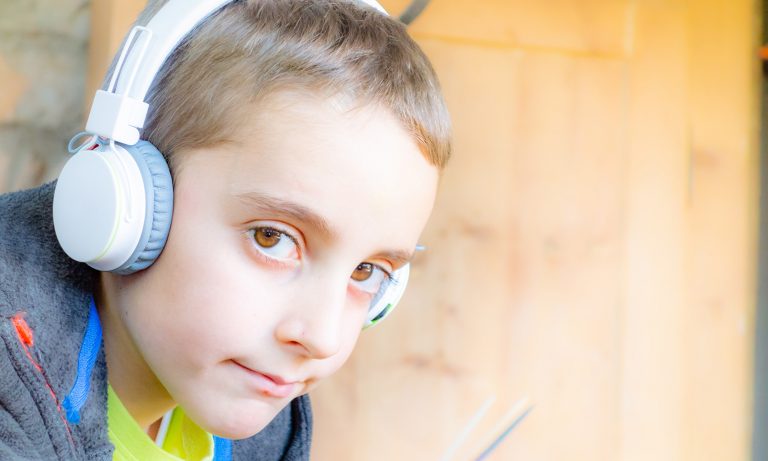What is it like to Parent an Autistic Child?

Being autistic brings both gifts and challenges. For example, we have often noticed that a dash of genius is within autism, manifesting as specific skills in mathematics or music or having perfect pitch or having a big compassionate heart and being an “animal whisperer.” We also know that our autistic community members have advanced every field of human endeavour from the arts to science to technology. There are musicians such as Mozart and Beethoven, artists such as van Gogh, activists such as Greta Thornburg, mathematicians such as Alan Turing, and advances in cattle handling and understanding autism because of Temple Grandin.
In fact, one of the common questions asked during our presentations is: if autism brings so many gifts, why are we struggling so much as parents to raise our autistic children? It is a good question and worthy of consideration. Our own clinical experience and much research show us that caregivers face multiple and various challenges while raising an autistic child, and commonly experience negative impacts on their physical health, psychological well-being, social network and finances. Parents are simultaneously delighted by their autistic children and challenged by them.
In this blog, we will discuss both the delights and the various challenges parents face, early signs of carer burnout, and ideas to prevent burnout based on our over 80 years of working with families who have one or more autistic children.
What is delightful about raising an autistic child?
Many parents describe their enchantment in the way their child thinks, what their child is interested in, the idiosyncratic nature of their language and the quirkiness of their behaviour at times. Regardless of the child’s profile, there are many aspects that are endearing about an autistic child. For example, there is research to show that participants in a study that were blind to whether the child was autistic or not found the laughter of autistic children more engaging and delightful than the laughter of non-autistic children. Many parents have charming stories about their autistic speaking child’s use of language, including neologisms and unusual phrases to describe life. For example, Tony’s sister-in-law referred to ice cubes as “water bones” and her father’s electric razor as the “hoover of the face”.
A child may be able to recite every element in the periodic table or learned to read before she was 3 years old or has memories as an infant in the cot. He may be able to draw with phenomenal talent from an early age or is so tender and in tune with younger children or his autistic sibling. She may have an energy that is just so comfortable to “be with,” no need for talking or looking at each other. His kindness and compassion from an early age may be striking.
What are the challenges in raising an autistic child?
We often tell a joke in our presentations, that autism is inherited, you get it from your children. There is a grain of truth in this joke, in that when you are raising an autistic child, the whole family needs to accommodate autism, creating an autism-friendly home, or adopt the characteristics of autism themselves. Spontaneity becomes a distant memory as schedules, routine and advance notice of change become necessary to survive the day. Social gatherings are minimised or brief and sometimes even avoided for months at a time, because they seem to trigger more meltdowns and stress for the autistic child and parents. It is easier to cook bland meals that will suit the autistic child, rather than being adventurous with new recipes. The sensory environment becomes toned down to the level that the autistic child can cope with.
Whilst all these adaptations are very helpful for the autistic child, the rest of the family can start to feel socially isolated, and that life is rather “toned down” and has lost some of its colour and excitement.
Autism is rarely experienced on its own, but commonly comes along with other conditions such as ADHD, anxiety disorders and other mental health conditions such as , depression , and medical conditions. We have found that the regular meltdowns that can involve both verbal and physical aggression are extremely taxing for families. A child experiencing brief but intense depression ‘attacks’, suicidal ideation and/or self-harm can be devastating for a parent, where the adage “you are only as happy as your least happy child” holds true for many parents.
Typical parenting practices do not tend to work for the autistic child as with a typical child, leading to potential arguments between parents about ways to raise and discipline their child, as well as confusion about what alternative strategies might work. Finding professionals that are skilled and experienced in autism is still very difficult in many areas of the world. Siblings do not understand autism and can be angry and perplexed about why their brother or sister is treated differently and seems to have different rules for them.
One of the core features of autism is “theory of mind” difficulties, that is, difficulty in understanding someone else’s perspective. Problems with theory of mind play out in all the autistic child’s relationships, and never more so than at home with parents and siblings. Whilst all children are egocentric to some extent, the autistic child can take this to new levels, not because they are selfish or inconsiderate, but because they are not innately wired to consider how their actions and words may affect other people. These problems are especially intense when the child is tired, hungry, upset or overwhelmed, i.e., most of the time. Other members of the family often feel under-appreciated and that the relationship they have with the autistic family member is not reciprocal. Resentment can build over time with tense family dynamics occurring where both parties feel misunderstood and unhappy.
For many autistic children affection and expressions of love such as a hug are not comforting, with a hug being perceived as being a squeezed, and why would someone squeeze you when you are sad or upset? As a result, the child can be very rejecting to well-meaning loving parents, leading the parent to feel sad and inadequate that they cannot comfort their child, and cannot enjoy physical affection with them. Expressions of love in verbal communication, such as the use of compliments and terms of endearment, may also be rejected by the autistic child. Parents can start to wonder if their autistic child loves them, and also whether the autistic child can feel and enjoy their love. Not being able to be the parent that they hoped and wished to be, parents can start to feel depressed.
Autism is the most invisible of the hidden disabilities. Members of the extended family, grandparents, uncles and aunts, may disbelieve the autism diagnosis, and instead blame the parents for what they misperceive as being bad behaviour by the child. Parents can feel blamed and misunderstood rather than supported by extended family, and family rifts and resentment are common.
As a result of a lack of understanding by family, friends and community, and increased social withdrawal, families with an autistic child can feel very socially isolated and start to internalise blame and shame. As one parent recently said, “I just thought I was a sh** mum”
How do you know if you are suffering carer burnout?
The start of carer burnout can be insidious, initially not noticed by the person themselves. The early signs are usually fatigue and social withdrawal, where it just feels like too much effort to catch up with friends and family. The person starts to avoid other people and sees them as a drain on their energies rather than a replenishment. The person may cease to enjoy activities they used to find pleasurable, like walking, art or cooking, because they feel so tired all the time.
Low mood, negativity and irritability are often a feature of carer burnout, where the person starts to feel there is not much to look forward to and tends toward a pessimistic outlook. Dreading when the next bad thing may happen, they start to feel that there is not much good about life, themselves, or their future.
Higher levels of anxiety and stress start, where the person becomes a worrier, or even more of a worrier than they were. They tend to have negative thoughts where they imagine catastrophes occurring or negative outcomes for their child and for themselves on a regular basis and a negative attitude to helpful suggestions from family members, teachers and therapists, with comments such as ‘I know it won’t work’, or ‘we’ve tried that’
Sleep may become more elusive, getting to sleep, staying asleep, and waking up too early. We know that as humans we process difficult emotions during sleep, which helps us to cope with adversity. Thus, disrupted sleep unfortunately adds to feelings of low mood, anxiety and stress.
Carers who are on the verge of burnout usually report that they are “at the end of their tether” and do not have the energy to cope any more, even though they want to. They can experience changes in appetite and weight and tend to become sick more often.
How to Recover from Carer Burnout
Whether carer burnout is periodic or chronic, fortunately there is much that you can do.
- Recognise that it is happening and ask for help. There is a saying that it takes a community to raise a child, and that is never more true than with autism. Sit down and think about all of the people in your life that care about you, write a list of them, and next to each name write down how they may be able to help you, no matter how big or small that initial idea is. When we are burnt out it is difficult to even know what we need, but you will need to talk about it to someone to be able to cry and express what is going on for you. You will need time to yourself to recover, in nature or with animals by yourself or enjoyable social times with friends. These times to yourself may seem impossible right now, but they are possible and in fact nonnegotiable for your survival of parenting your loved one. Reach out to an organisation near you who can provide counselling, respite, or guidance and advice. If you are unsure where to start, contact the local Autism Association and they will help you.
- Take a step back. When we are burnt out, we are overwhelmed and we cannot see the “wood for the trees,” as they say. You will only be able to take a step back when you have followed step 1 above. Once you have taken a step back, write down all the worries and concerns that you have about your child. The list may be long, and that is okay. Next, prioritise one worry on the list. You can only cope with one problem at a time, start with the most pressing. With a support person, do some problem-solving together on that first problem. Create a plan. The rest can wait. Usually, the first problem is about safety, safety trumps all the other problems.
- Check your thought patterns. Burnout is usually characterised by having unrealistic expectations on oneself, often due to being an over achiever or a perfectionist. Talk with someone to ensure that your expectations about the outcome for your loved one, and about what you can manage in one day, or one hour, are realistic. Write down and rehearse new thought patterns would assist you in caring for your loved one.
- Rethink your daily schedule. It is very common in burn out to neglect your own needs. You may need to have that GP or specialist appointment, prioritise it. Rethink how you can maintain good nutrition, rest, exercise, quality time with a partner or close friend and reconnect with the activities and interests that you used to enjoy. These may sound like luxuries at the moment, but they are crucial to your well-being. Remember, whilst you may feel that you must spend every minute of every day with your autistic child or they will not cope, this is a recipe for burnout. Burnout means that you may have a physical or mental breakdown, and then not be able to be with your autistic child at all. Maintaining self-care prevents this catastrophic outcome.
- Stay connected. Keep in contact with friends and family members for social times just to connect and hang out, even when you don’t feel like it. Humans are social beings, your need for socialising maybe less than others, but it is still a need. If it is not fulfilled, you will end up feeling depressed and increasingly isolated. Consider joining a support group. The members of the group will have empathy for your situation and have ideas to reduce burnout that they have found successful themselves. Sometimes it is very valuable to just be with someone who has shared the same thoughts and emotions.
- Access information. Sometimes the reason for feeling overwhelmed is because advice and methods utilised in the past don’t seem to be working in the parenting of your autistic child. You may benefit from new methods. Armed with knowledge about autism and how autism affects your child, you will be best placed to know how to parent your child when things become difficult. Overwhelm becomes less likely.
- Access the best version of yourself and from that point of view write yourself an incredibly supportive letter. Include in the letter the information you need to know on a daily basis based on your knowledge of yourself, your child and autism, including any mantras that may help and any sources of inspiration, including heroes that you have, images, or quotes. Make an appointment with yourself at the beginning of every day to spend two minutes reading this letter. Pause at the parts that make you feel the strongest and most capable. At these times really absorb those feelings into your body. It can be helpful at these times to also use a butterfly tap. This is a form of bilateral stimulation from EMDR (Eye Movement Desensitisation Reprocessing) that has been found to be very helpful to install internal resources. To use the butterfly tap, place your right hand on your left shoulder and your left hand on your right shoulder. Your arms should be crossed over your chest. Then just alternately tap your shoulders with each hand, first one and then the other and continue.
- Breathe. Our breath gives us energy. Regularly throughout the day, whenever you have a spare moment even if it is when you are washing up or on the toilet, pay attention to your breath. Notice the natural breath first, and then add an extra second to the in-breath and an extra two seconds to the out-breath. Continue with this new way of breathing for about one minute. You will experience increased energy and fortitude. If you can do it for two minutes that is even better.
Summary and Conclusion
It is more wonderful and more terrifying than we will possibly have imagined to be parenting an autistic child. Acknowledge both the wonder and the challenges and make the first step today toward self-care. Remember, if you are not here because of a catastrophe due to burn out, you cannot care for your loved one at all. Reach out for help and remember that you are not alone.
Where to from here?
We are presenting a full day seminar on being a parent for an autistic child, whether that child is small or grown. Gaining information is a very valuable way of feeling empowered to know what to do and how to do it. We hope that you can attend the day, but if not, remember that you have 60 days to watch the event afterwards. We hope to see you there!












